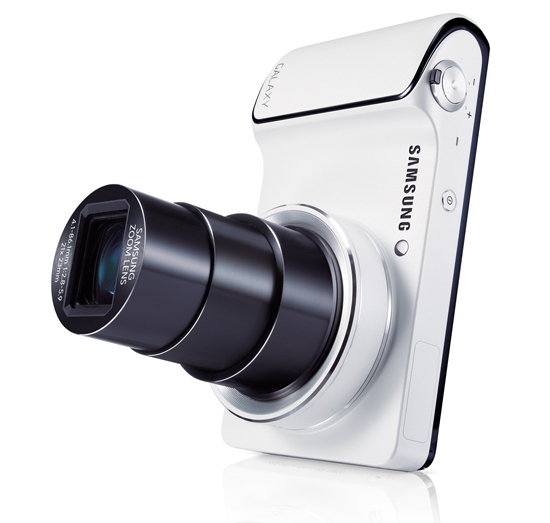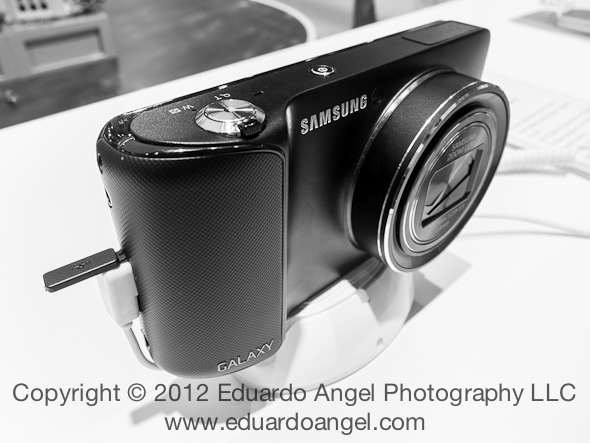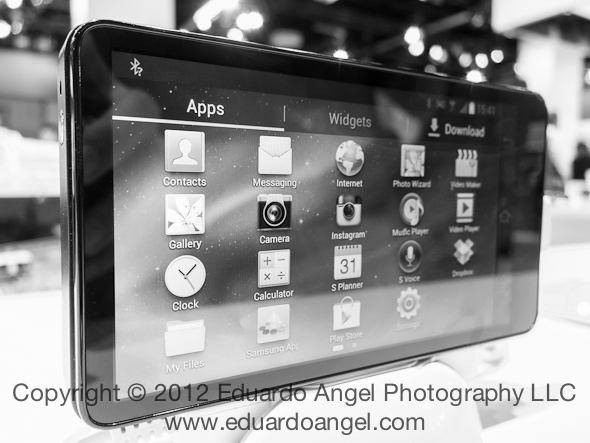Video
Life after Photokina: Samsung’s Galaxy Camera.
News from Photokina are like Fall leaves. They are everywhere and it is hard to know where to start taking care of them. Because of that, we are doing two things: a few blog posts highlighting the most interesting and influential products, and a paid Google Hangout on Monday October 15 at 1pm EST, where we will discuss what we saw and learned, and how it will affect your business in 2013.
Photokina is a huge show. There are nine giant exhibition halls and most of them are two stories high. Every corner of these buildings is filled with everything having to do with the photo industry. Canon, Leica, Nikon, and Sony introduced full-frame 35mm-sized sensor cameras, ranging from compact (Sony) to low-cost DSLRs (Canon, Nikon) to high-end pro rangefinders (Leica). Almost everybody claimed significant reductions in shutter lag and focusing speed, and many manufacturers added some form of Wi-Fi connectivity. If you think the iPhone 5 blurs the lines between cameras and smartphones you haven’t seen Samsung’s Galaxy Camera, by far the most original product we saw at Photokina.
 As we saw before with Nikon’s Coolpix S800c, Android is rapidly becoming the OS of choice for smart phones.
As we saw before with Nikon’s Coolpix S800c, Android is rapidly becoming the OS of choice for smart phones.
So far what has distinguished mobile phones from basic digital cameras is the absence of integrated zoom lenses. Until now that is. Imagine an Android Tablet like Google’s Nexus 7 that is the size of a smartphone (4.8 inches) with an HD Super Clear LCD touchscreen, a 1.4Ghz quad core processor, and 8GB of internal storage. Now add to it a 21x zoom lens that goes from 23-481mm (35mm equivalent), a 16MP BSI CMOS sensor, and an ISO of up to 3200. The 1/2.3 sensor is capable of recording slow motion video at 120 frames per second and 720×480 resolution. The output quality remains to be seen. While the Galaxy does not have a real phone, it comes fully equipped with 3G/4G wireless supporting apps like Skype and Google Voice, which are rapidly replacing traditional services.
 The device feels a bit bulkier than expected, but the fact that users can quickly open, edit, and share images might attract younger demographics (also, its size makes playing games a comfortable experience). Very soon the question will not be whether to use cameras or smartphones, but, rather, which new combination of camera plus smartphone to use.
The device feels a bit bulkier than expected, but the fact that users can quickly open, edit, and share images might attract younger demographics (also, its size makes playing games a comfortable experience). Very soon the question will not be whether to use cameras or smartphones, but, rather, which new combination of camera plus smartphone to use.
You can add this one to my ”contrarian” list, but I believe Samsung is the new Apple.
UPDATE 1004 AT&T the first U.S. carrier to embrace Samsung’s Galaxy Camera.
UPDATE 20130201 Samsung Doubles Tablet PC Market Share Amid Apple’s Lead.
UPDATE 20130415 How Samsung Changed the Game on Apple.

